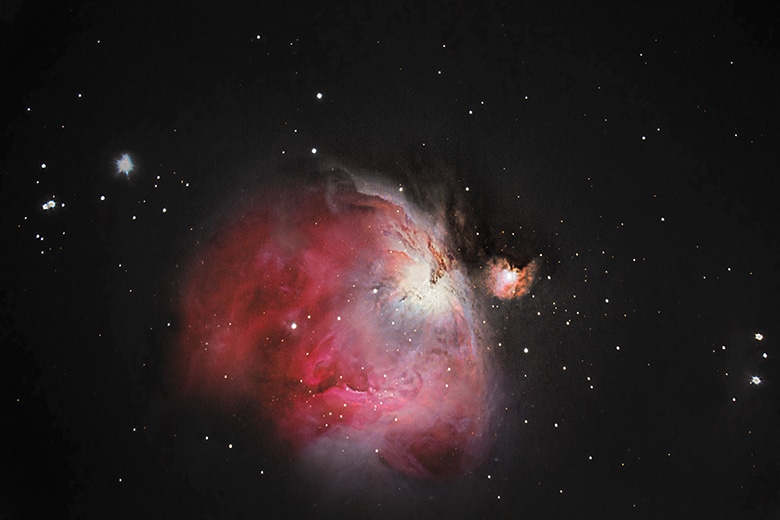We love all types of astrophotography from star trails, the moon and planets to deep space objects, such as nebulas and galaxies. It’s time we blogged our exploits and shared our settings and experiences, hence this new blog category of astrophotography. It’s sometimes frustrating, yet always enjoyable, photographing night skies. We start our astrophotography blog off sharing our experience for last night (Sunday Feb 18, 2018) while photographing the Great Orion Nebula.
Our blog posts in this category will include camera settings and gear used to capture night sky shots. We do use a telescope for deep sky imaging and normal DSLR cameras for other than deep space shots, so there is no need to own a telescope to follow along with us. You too can capture amazing skies with your own equipment.
Last night was more of a training run. Whilst we have had some successes in the past, we have experienced trouble lately with our telescope setup. Well it’s mainly a software talking to the hardware type of problem, where the software doesn’t quite work as it should. After hours of research on many excellent blogs, we decided to take advice and try using an Android tablet with the star alignment software, instead of our beloved Mac.
I know, I know, Just the thought of us using anything but an Apple product is kind of sacrilege, but we do own an Android tablet, purely for testing purposes when developing apps.
Perhaps I should whisper this part of the post.
The results using the Android tablet with the Celestron Sky Portal software were very pleasing. We aligned our telescope easily and apart from a couple of instances where it dropped out (or froze), the software tracked our chosen celestial object quite well, allowing us to grab some nice images of the Great Orion Nebula.
The most pleasing aspect of the software on the Android tablet was the smoothness and responsiveness when using the adjustment arrows to correctly align to a given star. We have never been able to do that when using an iPad, or even the Celestron hand controller.
We did have a few other problems to overcome, all Mother Natures fault. Summer in the tropics is not a good time for astrophotography. The humidity doesn’t allow for those bright clear skies, plus it’s the wet season, clouds don’t give stargazers the best experience. We had to shoot in between the cloudy times when our subject was in plain sight.
The bonus for the night was seeing the International Space Station (ISS) go across the sky for about 3 minutes. No, we didn’t get any pictures as we were aligning the scope at the time and didn’t have any ordinary cameras set up. (The ISS passes again tonight around 8.30pm pm so we will be out (clouds willing) to take some video of the ISS going from West to South.)
Our set up for the Great Orion Nebula photo shoot was:
- Celestron 8″ Nextstar Evolution Edge HD telescope connected via WiFi to …
- Celestron Sky Portal Software on a Samsung Galaxy Tab 2 10.1″ Android tablet.
- Canon 1DX attached to the telescope with a Celestron T-adapter and 7X Celestron reducer.
- Camera is then tethered to a MacBook Pro using Canon EOS Utility software to capture Images.
Camera Settings:
- ISO 20,000
- Shutter Speed 10 sec
- 35 images stacked and processed with Pixinsight
- Final image adjustments in Photoshop CC.
Sign-up for our online photography course and learn how to master your digital camera in easy to understand “at your own pace” lessons.
Click here for more information and sign-up details
